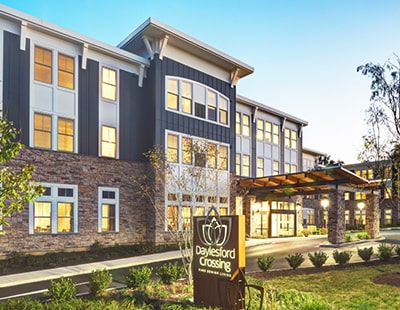It is no wonder that it was recently proclaimed that Later Living is set to be the next major UK residential asset class and Savills estimate that Later Living could grow into a £260 billion sector.
Investment in the Later Living sector is still fairly nascent but that is changing. More and more experienced operators from other jurisdictions are introducing their schemes here and UK institutional investors are starting to launch their own products (like L&G with Guild Living).
Earlier this year we received an overwhelmingly positive response at our joint seminar on the ‘Later Living Opportunity’ which we co-hosted with Assael Architecture. For many of the attendees already involved in alternative residential property, launching into later living feels like a natural progression from student housing and Build to Rent as the private sector responds to the needs of an ageing population.
This growing enthusiasm is further reflected by the recent launch of the Housing with Care Guide (1 November) by the Urban Land Institute (ULI). The Guide is the result of months of research and collaboration with experts in the field and is a big boost for the asset class (the ULI’s Build to Rent guide is widely respected and seen as assisting in the promotion and understanding of that asset class).
At the ULI’s launch, the similarities with Build to Rent in terms of opportunities was highlighted and it was emphasised that the solutions have to be flexible, offering residents a variety of options in terms of tenure, affordability and choice in managing care and finances. The freedom for people to choose what they want should be at the core of any scheme or product.
Indeed, there is a wide spectrum of potential models for later living schemes depending ultimately on the level of care and cost, and much of the middle-tier level of provision is up for grabs. Whilst the luxury and affordable ends of the market are generally well-served the mid-market is less so, despite its greater potential for growth as it will be more affordable and appealing to a larger section of the population.
People are increasingly looking for low maintenance, smaller properties and the key is to make them part of inter-generational communities which will have a positive impact.
Investors, developers and property professionals have the chance to not only ensure we all are living better in our old age but to tackle some of the existing market failures of the property industry. By making downsizing the primary choice for people as they get older you can unlock a significant amount of housing stock for younger buyers.
Similarly, the decline of the retail sector presents the opportunity to repurpose high streets for housing, increasing the housing stock and helping to revitalise town centres at the same time.
Increased interest in the sector is pushing innovations in accommodation design and the embracing of opportunities offered by new technology to help people live better for longer. Work by digital enablers in this field have already shown significant reductions in loneliness among later living residents who participate in such digital initiatives.
For example, Hero Wellbeing ran a scheme for six weeks with 30 residents at Inspired Villages’ Millbrook Village who used Fitbits to clock up an average of 8,109 steps a day.
It resulted in positive interaction amongst the residents as well as improving health. It is also clear that anonymised data from such schemes can help enhance the operational side of later living assets further.
This is not to say that the are no issues within the sector; limited access to land is currently holding the market back and more work needs to be done to free up land for development. Staffing is also an ongoing issue but this will delineate the good operators who are willing to have grown-up conversations around properly remunerating and attract talented people.
The UK is also hampered by the regulatory framework, which is a patchwork of legislation, some of which is not entirely fit for purpose. The constraints of the planning regime which is still based on the 70/80s use classifications is still yet to move with the times.
Leasehold reform is being targeted by the government as a wider issue but it may also be an opportunity to look at flexibility of tenure for later living schemes outside of the traditional leasehold model (and some operators are already looking into things like occupational rights contracts as a way forward).
Meanwhile, the Law Commission’s recent report on event fees will help to increase the understanding amongst residents and funders as it will hopefully pave the way for greater transparency with these fees.
The immature nature of the Later Living sector means lenders currently perceive it as high risk. In particular, lenders can struggle to understand the flow of operational income from event fees. However, growth in rental options will help unlock this as servicing debt becomes easier to model and, as more and more schemes come online, the increase in comparable information will assist the market.
Investors and funders should be aware that there are potential pitfalls and operational issues that can arise and they should ensure they have sufficient legal and operational expertise in place.
There are several areas where investors should consider their legal expertise and seek advice if uncertain. These include considering the potential impacts on tenure of leasehold reform, planning requirements and section 106 agreements, and innovative funding structures.
There are well placed law firms, like Rosling King, that already have the expertise in the Real Estate and Finance markets and can act as a conduit for the right stakeholders to get involved.
It is clear the Later Living sector requires a multifaceted approach engaging a variety of property advisors, funders, private equity, healthcare experts and developers. It may appear as a sector that is daunting, but rest assured the opportunities are there, and the bold investor and funder should be quick to embrace the Later Living sector.
*Alex Pelopidas is a partner at law firm Rosling King










.png)









Join the conversation
Be the first to comment (please use the comment box below)
Please login to comment